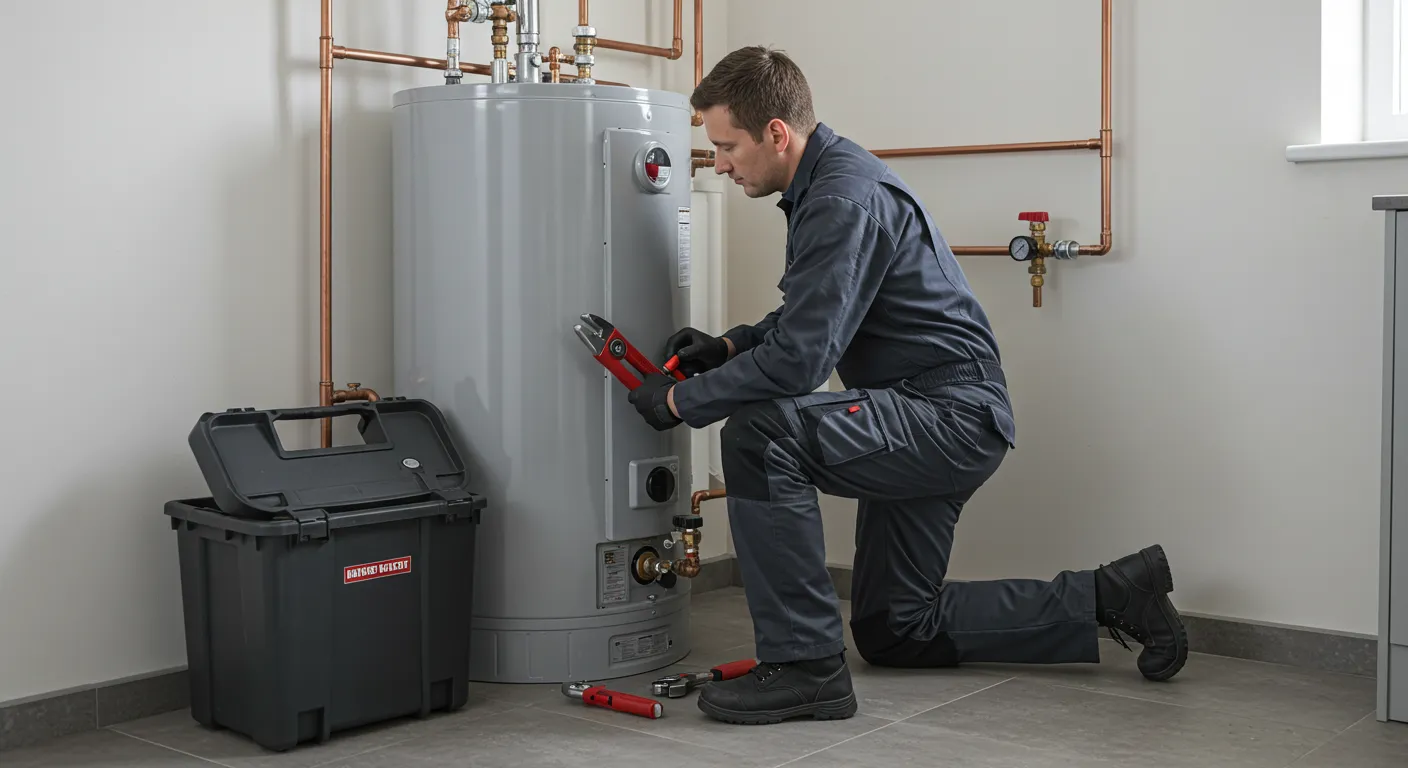
Water Heater Services in Monterey Park, CA
Common Water Heater Problems and When to Call for Repair
Standard tank water heaters, while generally reliable, can develop various issues over time. Recognizing the signs of a problem early can prevent more significant damage and expensive repairs. Common symptoms include:
- Lack of Hot Water: The most obvious sign something is wrong. This could be due to a faulty heating element (electric), pilot light issues or thermocouple problems (gas), thermostat failure, or a tripped breaker.
- Insufficient Hot Water: If you run out of hot water faster than usual, the tank size might be inadequate for your needs, sediment buildup could be reducing the effective capacity, or a heating element might be failing.
- Strange Noises: Popping, rumbling, or cracking noises often indicate sediment buildup at the bottom of the tank. As the heating element or burner heats the water, it boils the water trapped in the sediment, causing the noise. This buildup reduces efficiency and can shorten the lifespan of the tank.
- Leaking: Leaks can originate from various points, such as the temperature-pressure relief valve (TP&R valve), drain valve, or connections. A leak from the tank itself usually signifies corrosion and necessitates replacement.
- Murky or Smelly Water: Discolored or foul-smelling hot water can point to bacterial growth in the tank, often caused by sediment buildup, or could indicate anode rod corrosion.
- Pilot Light Issues (Gas Heaters): A pilot light that frequently goes out can indicate a problem with the thermocouple, the gas supply, or the pilot assembly itself.
Addressing these issues promptly with professional Water Heater Repair service in Monterey Park can diagnose the root cause and provide the necessary fix, preventing further damage or system failure. Ignoring these signs can lead to more severe problems, including potential water damage from leaks or the complete breakdown of the unit.
Water Heater Installation and Replacement in Monterey Park
When repairs are no longer sufficient, or your current unit is old and inefficient, Water Heater Installation & Replacement becomes necessary. Choosing the right water heater for your home's size, hot water demands, and energy efficiency goals is an important decision. Standard tank water heaters come in various capacities and energy factor ratings.
Several factors indicate it's time to consider replacement:
- Age: Most standard tank water heaters last between 10 to 15 years. If your unit is approaching or past this age, it may be more prone to failure and less energy-efficient than newer models.
- Frequent Repairs: If you are constantly spending money on repairs, the cumulative cost can quickly exceed the cost of a new, more reliable unit.
- Leaks from the Tank: As mentioned, a tank leak is usually terminal for the unit.
- Decreased Efficiency: Older models may struggle to heat water effectively or maintain temperature, leading to higher energy bills.
The Water Heater Installation & Replacement process involves assessing your home's needs, helping you select a suitable replacement, safely disconnecting and removing the old unit, preparing the site, properly installing the new water heater, connecting it to water and power/gas lines, and ensuring all safety features, like the TP&R valve, are correctly installed and functioning. Professional installation ensures the unit operates safely and efficiently according to manufacturer specifications and local codes in Monterey Park. For urgent situations, the availability of same-day service for water heater replacement can provide immediate relief and restore your hot water supply quickly.
The Importance of Water Heater Maintenance and Flushing
Regular Water Heater Maintenance is perhaps the most overlooked aspect of owning a standard tank water heater, yet it is critical for maximizing its lifespan, maintaining efficiency, and preventing unexpected breakdowns. One of the most important maintenance tasks is flushing the tank.
Over time, minerals like calcium and magnesium, along with sediment and rust particles, can settle at the bottom of the water heater tank. This sediment layer has several negative effects:
- Reduces Efficiency: Sediment acts as an insulator, forcing the heating element or gas burner to work harder and longer to heat the water above it. This increases energy consumption and utility bills.
- Causes Noise: As detailed earlier, sediment is a primary cause of rumbling or popping sounds.
- Shortens Lifespan: The constant heating and cooling of the sediment layer can cause stress on the tank's lining, potentially leading to corrosion and leaks prematurely.
- Harbors Bacteria: Sediment can create an environment where odor-causing bacteria can thrive.
Water Heater Maintenance typically involves inspecting the anode rod (which sacrifices itself to prevent tank corrosion), checking the TP&R valve, examining connections for leaks, inspecting the burner assembly or heating elements, and performing a thorough tank flush.
The benefits of regular maintenance and flushing include:
- Extended Lifespan: Removing corrosive sediment helps protect the tank.
- Improved Efficiency: A clean tank heats water more effectively, saving energy.
- Preventing Breakdowns: Catching potential issues like a corroding anode rod or a sticky TP&R valve early can prevent more serious problems.
- Consistent Hot Water: Reduced sediment means more usable tank capacity.
- Quieter Operation: Eliminating the popping and rumbling sounds caused by boiling water in sediment.
Investing in routine Water Heater Maintenance is a proactive approach that saves money in the long run by avoiding costly emergency repairs and premature replacement.

